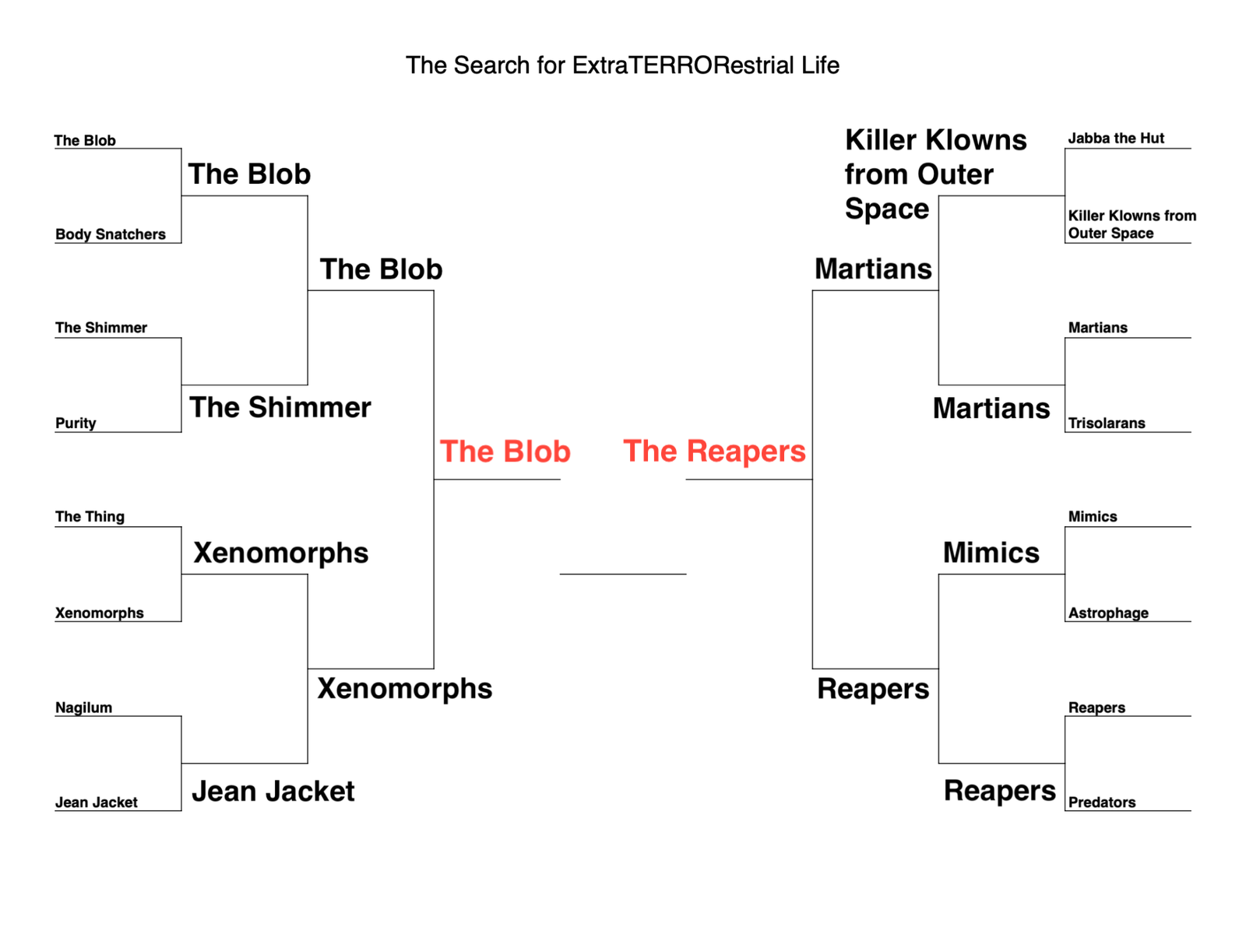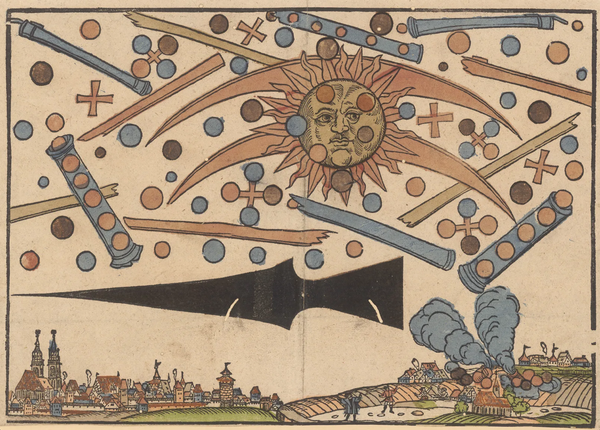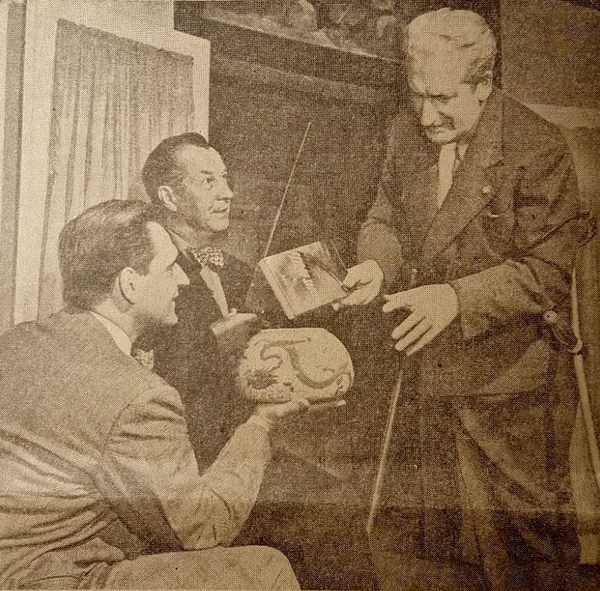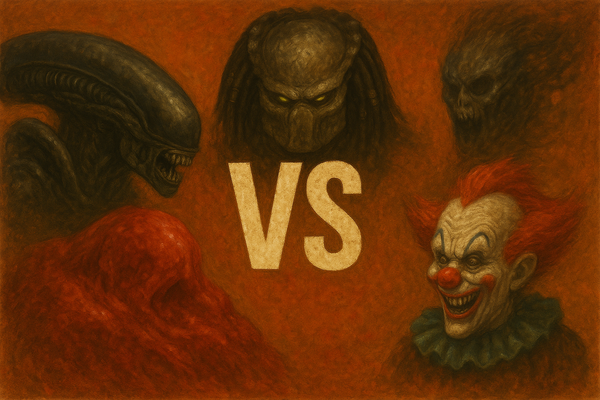What Can Humans Offer Aliens?

Thanks for tuning back into the BeX Files! Hope you had an out-of-this-world week.
First, shoutout to everyone who has bought, borrowed, or otherwise procured a copy of First Contact: The Story of our Obsession with Aliens (obligatory note: if you liked it, consider leaving a review on Goodreads, Amazon, Barnes & Noble, or your favorite outlet!).
One of the coolest things about having the book out in the wild is receiving thoughts and feedback from readers. It's been genuinely refreshing to hear what people are taking away from First Contact.
To that point, a few readers have reached out about one of the book's most important throughlines: What insights or knowledge might humans offer to aliens?
A lot of alien lore and popular culture is preoccupied with the opposite formulation—how could contact with aliens benefit humans? Scientists have often speculated about the superior technologies that advanced civilization could bring to humans, or the scientific insights that could follow the discovery of even the simplest alien microbes. In fiction, aliens often share their unique worldviews and capabilities with humans, which advance our own species’ understanding of the universe, and our place within it (from Carl Sagan’s Contact to the eternal appeal of Superman).
But I find myself most drawn to stories that depict humans as bearers of essential wisdom that has been somehow missed by aliens. I wanted to briefly contrast two of my favorite examples: Ted Chiang’s 1998 novella “Story of Your Life” and Andy Weir’s 2021 novel Project Hail Mary. A warning that there will be mild spoilers ahead; scroll down to the Search for ExtraTERRORestrial Life if you want to avoid them.
Chiang’s “Story of Your Life,” which was adapted into the 2016 film Arrival, is hands-down (or tentacles-down) my favorite alien tale. I cannot recommend it enough for anyone who enjoys uncontrollably sobbing over the emotional dimensions of fundamental physics. The story follows Louise, a preeminent linguist, who is enlisted to decipher the language of visiting aliens, known as heptapods due to their seven tentacled appendages. She is paired with the physicist Gary, who is tasked with unraveling heptapod math and physics; their professional partnership evolves into a romance, through a mutual love of academic minutiae.
One of the reasons I am so enamored with the novella is Chiang’s meticulous sense of setup and payoff as the story unfolds through temporally unmoored vignettes. For instance, Louise observes early on that the heptapods “never asked questions about anything” and “seemed to be an incurious bunch.” The penny drops later in the story as Louise and Gary discover that the heptapods have no concept of the arrow-of-time; they experience the past, present, and future simultaneously. What is there to be curious about if you already know what happens at the end?
Gary is first tipped off to the heptapod’s immersive worldview while probing their mathematical preconceptions, revealing a “topsy-turvy” formulation of the universe. “Physical attributes that humans found intuitive, like kinetic energy and acceleration” were “conducive to a chronological interpretation of events: one moment growing out of another,” Chiang writes, while the heptapods had a “teleological view of events” in which “one needed knowledge of the effects before the causes could be initiated.”
For this reason, heptapods showed no interest in, or comprehension of, linear mathematics, including simple forms of algebra. However, they could easily grasp fundamental laws of physics, in both the classical and the quantum realms, which lack any intrinsic arrow of time. In this story, one insight that humans can offer to the aliens is the personal experience of living inside a linear chronology.
Meanwhile, in Project Hail Mary, the protagonist is a school teacher named Ryland Grace, who is saddled with the rather monumental task of saving the world (a film adaptation is due in spring 2026).
After the Sun gets infected with an alien microbe, called an “astrophage,” scientists discover that the stellar pandemic has reached several neighboring stars—all except Tau Ceti, which is 11 light years away. Grace is tasked with traveling to the star to find the source of its immunity, and to share those results before all life on Earth is killed off by the precipitous dimming of an ailing Sun.
He is surprised to find that he is not the only lifeform with this messianic mission; after reaching Tau Ceti, he meets “Rocky,” a five-limbed carapaced “Eridian” alien from a planet orbiting the star 40 Eridani, which is also infected with astrophage.

A friendship forms between Grace and Rocky, both sole survivors of their crews, as they team up to solve their shared problem. But while Eridians are technologically advanced—they did organize an interstellar mission, after all—Rocky expresses confusion over certain details of his trip to Tau Ceti.
Unlike humans, Eridians weren’t particularly interested in spacefaring before they were faced with the apocalyptic emergency of astrophage. Rocky puzzles over how his ship ended up arriving at Tau Ceti so much earlier than expected in the crew’s calculations. Ryland realizes that the Eridians are totally ignorant of general relativity, and therefore built their mission solely around Newtonian physics. As a consequence, they did not anticipate the time-dilation effects of traveling at relativistic speeds, leading to an early arrival and calamity for the alien crew.
In Project Hail Mary, then, the essential knowledge that humanity can offer is our understanding of relativity—an insight born not from superior technology, but from a patient curiosity about the structure of the universe. Where Chiang’s heptapods lack experience of the arrow of time, Weir’s Eridians lack an understanding of the warping of time. The stories remind us that even in the vastness of the cosmos, humans might have something uniquely precious to teach—in these cases, a new perspective on the strange properties of time.
If you would like to share your own favorite examples of humans filling in knowledge gaps for aliens, please let me know at thebxfiles@gmail.com.
And now, it’s time for the FINAL SHOWDOWN in the Search for ExtraTERRORestrial Life (recap here).

The Blob—all-consuming, always hungry, impervious to reason—has enveloped the Xenomorphs to advance to the last Halloween head-to-head (though the Blob does not, in fact, have a head). And the Reapers—ancient, colossal, and annihilatory—have harvested the Martians of War of the Worlds. It’s The Blob versus the Reapers in the last fight to determine the Scariest Alien Ever. Send your votes in to thebxfiles@gmail.com!
Thanks again for subscribing to the BeX Files! Stay tuned for a new alien dispatch next Friday.




